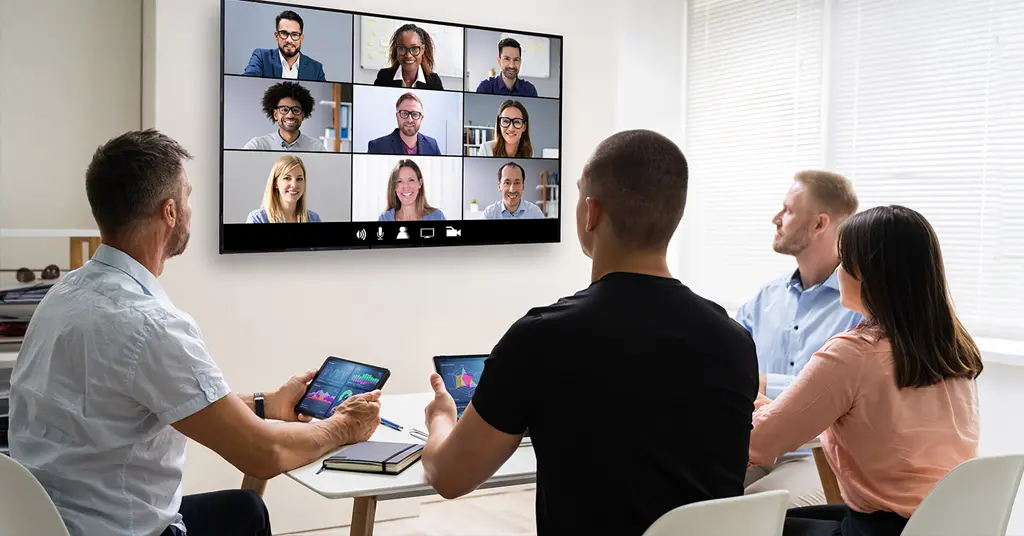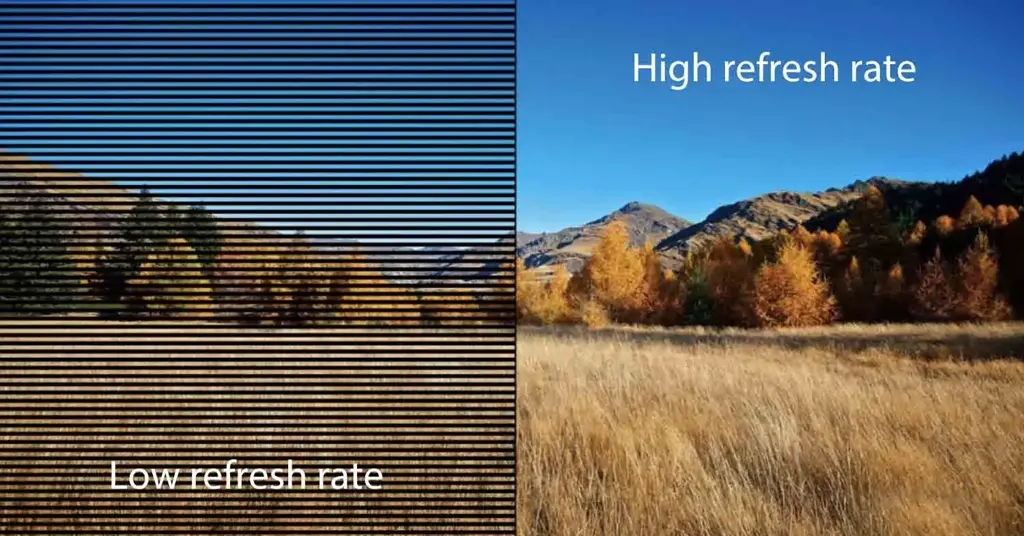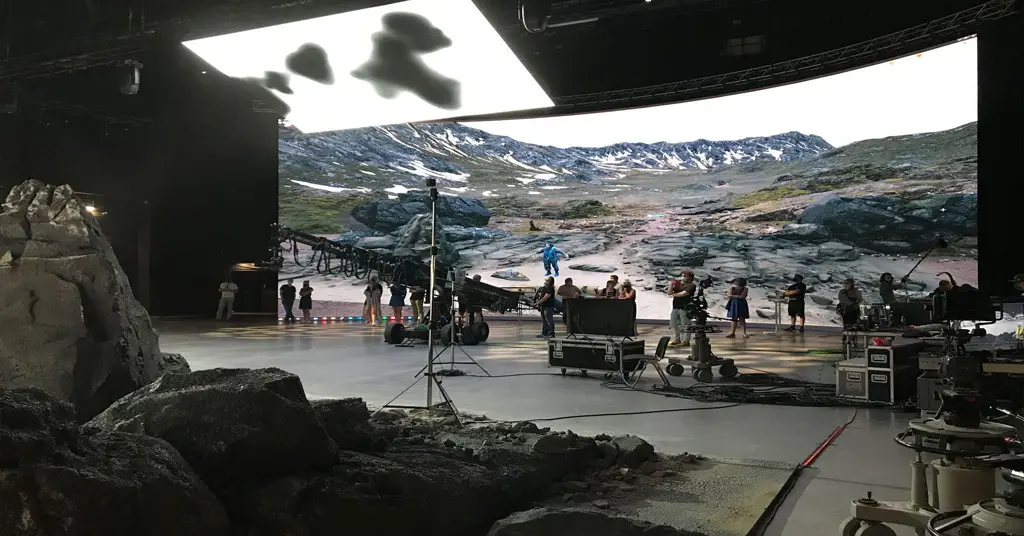4 Basic Knowledge About LED Screen Refresh Rate
Table of Contents
When we buy LED screens, we will always see the device parameters of LED screens such as refresh rate, gray scale, and contrast in the product manual. So what is the led screen refresh rate? How will different LED screen refresh rates affect the display effect? As an LED screen manufacturer with a history of more than 20 years, Galaxyav will reveal 4 basic knowledge about the refresh rate of LED screen for you in this article.
1. What is the refresh rate of the LED screen?
The attribute column of the LED screen refers to the number of times the electron beam repeatedly scans the image on the LED screen per unit time. Usually we take 1 second as the time period to count the number of scans, and this result is the refresh rate of the LED screen, and the unit is Hertz. The refresh rate of the LED screen is a key indicator to judge the image stability and excellent performance of the LED screen.
Currently, in the commercial field of LED screens, the most common refresh rates are 1920Hz and 3840Hz. Usually the former is applied to ordinary LED screens, and the latter is often used in mid-to-high-end LED screen systems. Because the refresh rate of the latter is twice that of the former, for the viewers, the viewing images are more coherent and the overall viewing experience is more comfortable.
Among the technical parameters of LED screen, there is a technical indicator called frame rate. Because its unit of measurement is also hertz, it is easy to be confused with the screen refresh rate. So what is the frame rate of the LED screen? It refers to the number of times the screen information is updated per second. In a sense, the animation content is actually the result of continuous refreshing of multiple continuous still images. Because the human naked eye perceives more than 24 pictures in one second as dynamic images (videos), the higher the number of picture information updates per second, the better the viewing experience will be. Common frame rates are 25Hz, 30Hz, 50Hz, 60Hz, etc.
For viewers, the refresh rate and frame rate of the LED screen will directly affect the picture quality, and the two complement each other. Suppose there is an LED screen with a refresh rate of 3840Hz, and a 60Hz movie is playing at this time, then the number of times the picture on the LED screen is refreshed every second is 3840/60=64 times. For the audience, the viewing experience of the LED screen will be very good.

2. What is the difference between the 1920Hz and 3840Hz refresh rates of the LED screen?
For ordinary people, there is not much difference between the two under the naked eye, and even to some extent, there is no difference between the two. Because the upper limit of the picture difference that the human naked eye can perceive is 24Hz, both 1920Hz and 3840Hz are far beyond this value, so there is no particularly large difference for naked eye observation. So under what circumstances will there be more obvious differences between the two?
1. Electronic equipment produces different effects
Taking smart phones as an example, when we use the mobile phone to shoot the dynamic content of the LED screen, the two different screen refresh rates will be very different. When the mobile phone shoots an LED screen with a refresh rate of 1920Hz, the shooting result will have obvious moiré. When shooting an LED screen with a refresh rate of 3840Hz, the moiré pattern is not obvious.
2. The degree of fatigue of watching with the naked eye for a long time is different
In a short period of time, when the naked eye watches two LED screen video content with different refresh rates, the naked eye will not feel particularly tired. However, if you watch the dynamic picture of the LED screen with a low refresh rate for a long time, the fatigue of the naked eye will be more obvious. This is also the fundamental reason why LED screen manufacturers and R&D institutions do everything possible to increase the refresh rate of LED screens.
3. The price difference is obvious
LED screens with high refresh rates usually need to be equipped with higher-grade electronic components. There are countless different types of electronic components behind a complete set of LED screens, so relatively speaking, the manufacturing cost of LED screens with high refresh rates will be higher. Normally, the manufacturing cost of 3840Hz LED screen will be about 2.5-3 times more expensive than 1920Hz LED screen.
LED screens for advertising in various commercial places will basically choose a refresh rate of 1920Hz. Because the 3840Hz refresh rate represents a higher initial cost investment, and there will be more ongoing costs in the LED screen repair and replacement process in the future. High-end family viewing room projects often use LED screens with a refresh rate of 3840Hz.

3. How to increase the refresh rate of the LED screen?
Usually, LED display manufacturers will use high-brush PWM driver ICs to increase the refresh rate of LED displays. Conventional displays can reach 1920Hz, and small-pitch LED screens can reach 3840Hz. A high-quality driver IC has a very good performance in improving the refresh rate, gray scale and image vividness of the LED screen.
With the continuous improvement of the camera level, more and more high-definition video content is preserved. This also makes LED screen manufacturers need to do everything possible to improve their display refresh technology in order to perfectly play high-definition video content. It is worth mentioning that many LED screen manufacturers in China have greatly improved their technology research and development in recent years, and they are likely to lead the global LED screen technology revolution in the future.
4. Which projects require LED display with high refresh rate?
In theory, a higher refresh rate means a better viewing experience, but not all projects require a high refresh rate of 3840Hz. For advertising screens in outdoor environments, the refresh rate of 1920Hz is more than enough. However, in some high-definition dynamic video projects for indoor playback, a refresh rate of 3840Hz is very necessary.
For example, the monitoring system used to display real-time dynamic vehicle driving conditions on the highway requires a high refresh rate of 3840Hz. This kind of high-refresh LED screen has a very good performance in preventing high-speed congestion and timely reminding of vehicle failure warning information on the road ahead.
In terms of virtual background film production, LED display with high refresh rate also has a very broad application prospect. The virtual scene created by the LED screen with high refresh rate has replaced the real background that cost a lot of capital to build in the past. Moreover, various special effects that cannot be realized in real situations can be created according to the script requirements of the movie. This virtual background shooting technology has been recognized by the Hollywood film industry and has been widely used.

Summarize
The above are the 4 basic knowledge points of high refresh rate of LED screen. LED screen with high refresh rate has better performance in terms of viewing experience and picture display effect than LED display with regular refresh rate. However, LED displays with high refresh rates are not suitable for all application scenarios and need to be selected according to the actual situation. Galaxyav has many years of experience in LED display manufacturing, and has many successful cases in dome LED screen and flexible led screen. If you have needs in these aspects or need LED screen customization in special scenarios, please contact our senior technical engineers, and we will provide you with high-quality audio-visual integrated system solutions for free.
Want to know more about the Audio Visual Solutions?
